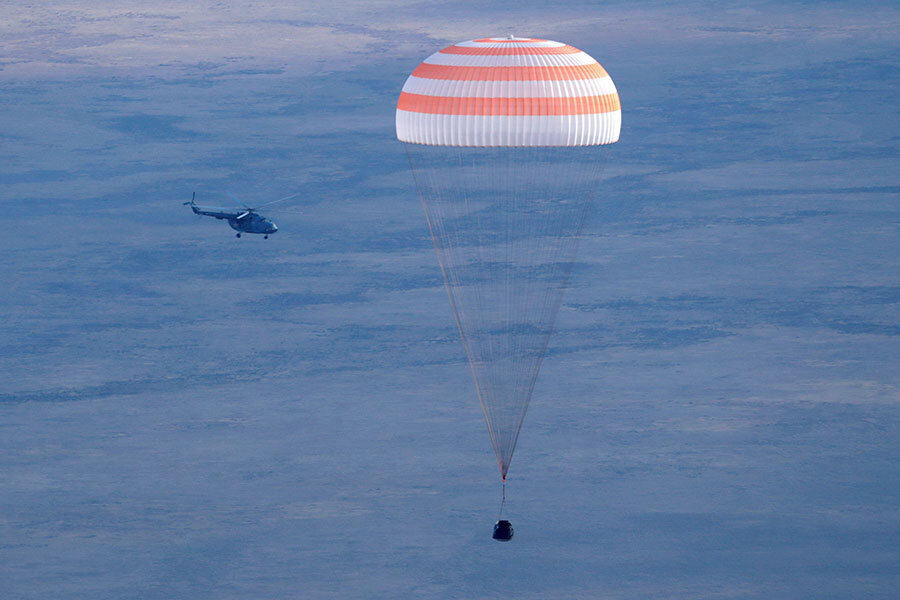Soyuz capsule returns multinational astronaut crew to Earth
Loading...
A Russian Soyuz capsule containing a joint US, Russian, and Japanese crew returned to Earth from the International Space Station, departing the station Sunday evening and landing in Kazakhstan several hours later.
The return journey for the three astronauts – station commander Anatoly Ivanishin, with the Russian space agency, NASA astronaut Kate Rubins, and Takuya Onishi of Japan – took about three and a half hours from undocking until arrival, and concluded with a parachute landing.
"I'm kind of reluctant to close the hatch," said Mr. Ivanishin on Friday during a change-of-command ceremony, in which he handed the space station over to US astronaut Shane Kimbrough. "The time is very special here ... I didn't have time to know what's going on our planet, and maybe it's for the better. On the space station, you live in a very friendly, very good environment."
The landing marked the end of a four-month mission, which included the installation of a parking spot for future commercial space taxis and the first use of a DNA sequencer in space by astronaut Kate Rubins, made possible by a handheld sequencer called MinION. As Joseph Dussault reported for The Christian Science Monitor in August:
Spores, molds, and fungi are a part of life – even in space, they can latch onto surfaces or thrive in water reserves. With DNA sequencing, astronauts can identify these microbes and make informed in-flight decisions. But before NASA’s successful trial, there was no way to sequence DNA aboard the ISS or any other crewed spacecraft. All samples had to be sent back to Earth for testing.
... DNA sequencing is a costly and time-consuming process, but a relatively cheap miniature sequencer could benefit scientific endeavors in remote locations and developing countries. And portable, spaceflight-compatible sequencing technology could one day be integrated into the search for alien lifeforms.
"The test of the Biomolecule Sequencer on ISS is an important first step to learning how to sequence macromolecules like DNA in space," Jason Dworkin, a biochemist at NASA’s Goddard Space Flight Center, told the Monitor. "This is important to search for evidence of life elsewhere in the solar system – Mars, Europa, Enceladus – and be able to distinguish it from any biological contamination we brought with us from Earth."
Still remaining aboard the space station with Mr. Kimbrough are Andrei Birosenko and Sergey Ryzhykov, both of Russia, who arrived on Oct. 22. Another three crew members are set to join them next month.
This report contains material from the Associated Press and Reuters.








